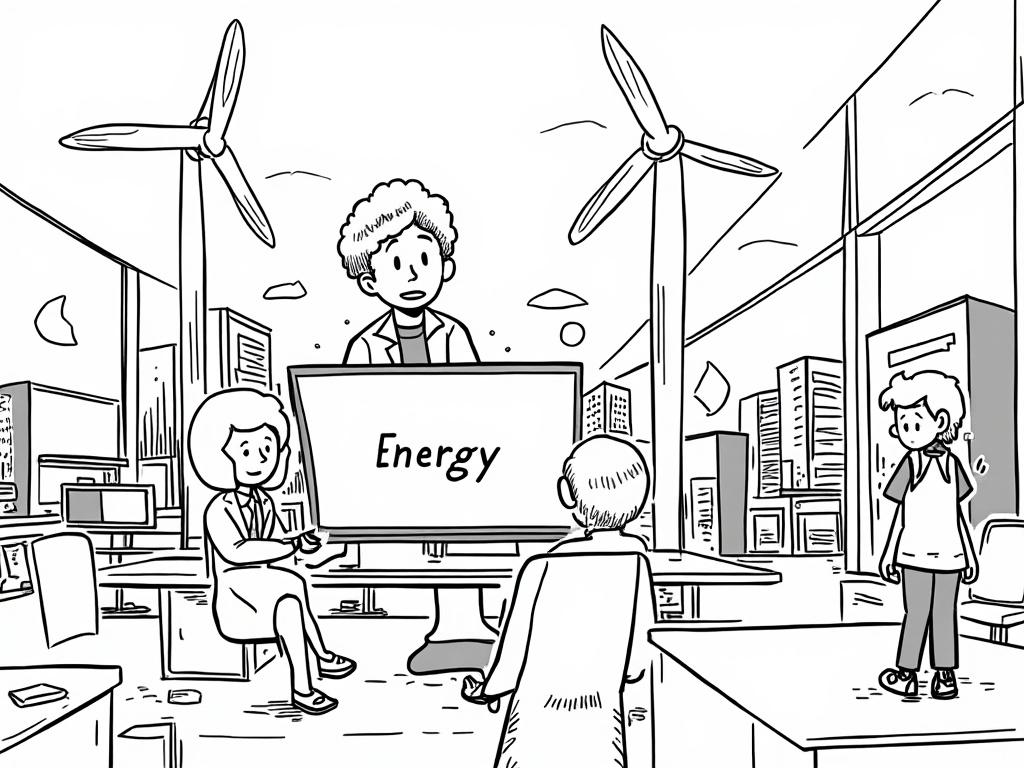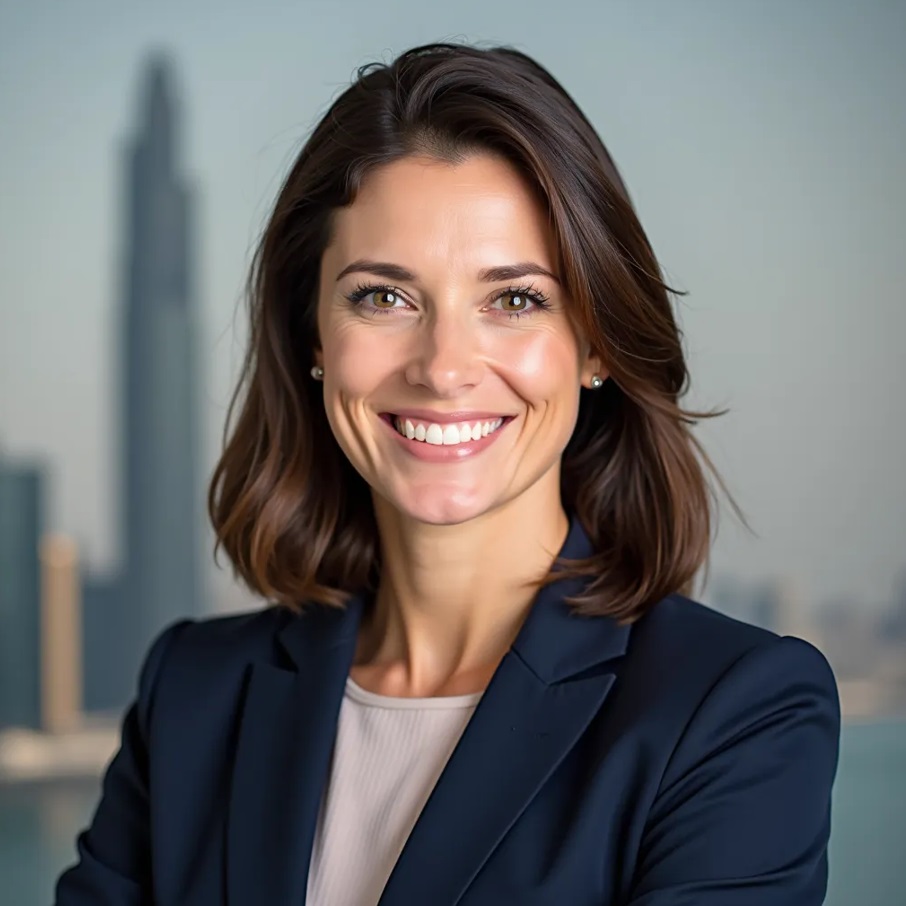
Nuclear Energy in the UAE: Barakah Plant – A Milestone in Sustainable Power Generation
Reading time: 12 minutes
Ever wondered how a desert nation became a nuclear energy pioneer in just two decades? The UAE’s journey from oil-dependent economy to nuclear power trailblazer offers fascinating insights into strategic energy transformation. Let’s explore how the Barakah Nuclear Power Plant is reshaping the Middle East’s energy landscape.
Table of Contents
- The Nuclear Vision: From Desert Dreams to Reality
- Barakah Plant: Engineering Marvel in the Desert
- Construction Journey: Challenges and Triumphs
- Safety First: International Standards and Protocols
- Economic Transformation: Beyond Energy Generation
- Environmental Impact: Clean Energy Goals
- Regional Leadership: Setting Middle East Standards
- Powering Tomorrow: UAE’s Nuclear Future
- Frequently Asked Questions
The Nuclear Vision: From Desert Dreams to Reality
Picture this: In 2008, the UAE announced its ambitious nuclear energy program. Critics questioned whether a country with abundant oil reserves needed nuclear power. Fast-forward to 2024, and the Barakah Nuclear Power Plant stands as testament to visionary leadership and strategic planning.
Key Strategic Drivers:
- Diversifying energy portfolio beyond hydrocarbons
- Meeting growing electricity demand (7% annual growth)
- Reducing carbon footprint by 21 million tons annually
- Creating sustainable economic opportunities
Well, here’s the straight talk: The UAE’s nuclear program isn’t just about electricity generation—it’s about energy security, economic diversification, and environmental stewardship rolled into one transformative initiative.
Barakah Plant: Engineering Marvel in the Desert
Located 53 kilometers west of Ruwais in the Al Dhafra region, Barakah represents the largest nuclear energy project in the Arab world. The facility houses four APR-1400 reactors, each capable of generating 1,400 megawatts of electricity.
Technical Specifications Breakdown
| Specification | Details | Global Comparison |
|---|---|---|
| Total Capacity | 5,600 MW | Equivalent to 6 large gas plants |
| Reactor Type | APR-1400 (Advanced Power Reactor) | Generation III+ technology |
| Annual Output | 40+ TWh | Powers 5.6 million homes |
| Construction Cost | $24.4 billion | $4,357 per kW installed |
| Operational Lifespan | 60+ years | Extended beyond typical 40 years |
Innovative Design Features
The APR-1400 reactors incorporate cutting-edge safety systems, including:
- Passive Safety Systems: Function without external power or human intervention
- Enhanced Containment: Double-wall concrete structure withstands extreme events
- Advanced Control Systems: Digital instrumentation with redundant backup systems
- Seismic Resistance: Designed to withstand earthquakes up to magnitude 7.0
Construction Journey: Challenges and Triumphs
Quick Scenario: Imagine coordinating 40,000+ workers from 60 countries in desert conditions while maintaining nuclear-grade quality standards. That’s exactly what the Barakah project team accomplished.
Milestone Timeline Visualization
Barakah Construction Progress
Progress percentages represent completion efficiency compared to global nuclear construction standards
Overcoming Desert Construction Challenges
The construction faced unique obstacles that required innovative solutions:
Challenge 1: Extreme Weather Conditions
Solution: Implemented specialized concrete cooling systems and adjusted work schedules to avoid peak heat hours. Workers operated during cooler night shifts, maintaining productivity while ensuring safety.
Challenge 2: Skilled Labor Shortage
Solution: Established comprehensive training programs, bringing nuclear expertise from South Korea while developing local Emirati talent. Over 2,000 UAE nationals received specialized nuclear training.
Challenge 3: Logistics Complexity
Solution: Built dedicated ports and transportation infrastructure. The massive reactor vessels, weighing 320 tons each, required custom-designed transportation systems.
Safety First: International Standards and Protocols
Nuclear safety isn’t negotiable—it’s an absolute requirement. The UAE implemented a comprehensive regulatory framework that exceeds international standards.
Multi-Layered Safety Approach
Regulatory Oversight:
- Federal Authority for Nuclear Regulation (FANR) provides independent oversight
- International Atomic Energy Agency (IAEA) conducted 42+ inspection missions
- Regular peer reviews from nuclear industry experts
- Transparent reporting to international nuclear community
Pro Tip: The UAE’s nuclear program follows the “defense-in-depth” principle—multiple independent layers of safety systems ensure that even if one system fails, others maintain plant safety.
Advanced Safety Features:
- Reactor Protection System: Automatically shuts down reactor during anomalies
- Emergency Core Cooling: Prevents fuel damage during accidents
- Containment Systems: Multiple barriers prevent radiation release
- Spent Fuel Management: Secure on-site storage with long-term disposal planning
Human Capital Development
Safety culture begins with people. The UAE invested heavily in developing nuclear expertise:
Real-world example: Mohammed Al Hammadi, CEO of Emirates Nuclear Energy Corporation, spent years in South Korea learning reactor operations before leading the UAE program. This hands-on approach ensures local leadership understands nuclear technology deeply.
Training Statistics:
- 10,000+ hours of training per nuclear operator
- Full-scale reactor simulators for operational training
- Partnerships with leading nuclear universities worldwide
- Continuous professional development programs
Economic Transformation: Beyond Energy Generation
The Barakah plant represents more than clean electricity—it’s catalyzing economic diversification and technological advancement across the UAE.
Direct Economic Benefits
Job Creation Impact:
- 3,000+ permanent operational jobs
- 40,000+ construction jobs at peak
- 1,500+ highly skilled nuclear specialists
- Significant multiplier effect in supporting industries
Cost Competitiveness Analysis:
Nuclear power costs approximately 2.9 fils per kWh, making it competitive with natural gas generation while providing price stability over decades. Unlike fossil fuel plants, nuclear costs remain stable regardless of commodity price fluctuations.
Supply Chain Development
The nuclear program spurred development of advanced manufacturing capabilities:
- Local content increased from 15% to 60+ % during construction
- UAE companies now manufacture nuclear-grade components
- Technology transfer agreements created intellectual property assets
- Export opportunities for nuclear services across the region
Environmental Impact: Clean Energy Goals
Ready to transform complexity into competitive advantage? The UAE’s nuclear program demonstrates how developing nations can leapfrog to clean energy technologies while maintaining economic growth.
Carbon Emission Reductions
Barakah’s environmental impact extends far beyond the UAE’s borders:
Annual Environmental Benefits:
- 21+ million tons CO2 reduction annually
- Equivalent to removing 4.4 million cars from roads
- 25% of UAE’s total electricity from clean nuclear source
- Supports UAE Net Zero 2050 strategic initiative
Water Resource Management
Nuclear power generation requires significant water management. Barakah addresses this through:
- Seawater cooling systems with environmental monitoring
- Marine life protection measures during construction and operation
- Thermal discharge management to minimize ecosystem impact
- Continuous environmental surveillance programs
Regional Leadership: Setting Middle East Standards
The UAE’s nuclear success story influences energy strategies across the Middle East and developing world.
Model for Developing Nations
Case Study: When Saudi Arabia announced its nuclear program in 2020, it explicitly referenced the UAE’s Barakah model as a benchmark for safety, transparency, and international cooperation. This demonstrates how pioneering projects create regional knowledge spillovers.
International Recognition:
- IAEA praised UAE’s comprehensive regulatory framework
- Nuclear industry awards for construction excellence
- Model bilateral agreements with nuclear technology partners
- Template for non-proliferation compliance in emerging nuclear states
Geopolitical Implications
Nuclear energy reshapes regional energy dynamics:
- Reduced dependence on natural gas imports
- Enhanced energy security during regional tensions
- Strengthened partnerships with nuclear technology leaders
- Platform for peaceful nuclear technology cooperation
Powering Tomorrow: UAE’s Nuclear Future
With Barakah’s success, what’s next for UAE nuclear development? The foundation is set for expanded nuclear capabilities and regional leadership in clean energy innovation.
Next-Generation Nuclear Technologies
The UAE is exploring advanced nuclear technologies:
- Small Modular Reactors (SMRs): Flexible, scalable nuclear solutions
- Nuclear Hydrogen Production: Clean hydrogen for industrial applications
- Advanced Fuel Cycles: Enhanced efficiency and waste minimization
- Nuclear Desalination: Combining electricity and water production
Strategic Implementation Roadmap
Phase 1 (2024-2030): Optimization and Expansion
- Maximize Barakah operational efficiency
- Develop nuclear maintenance and fuel services
- Establish regional nuclear training center
- Evaluate additional reactor locations
Phase 2 (2030-2040): Technology Leadership
- Deploy next-generation reactor technologies
- Develop nuclear export capabilities
- Integrate nuclear with renewable energy systems
- Lead regional nuclear cooperation initiatives
Phase 3 (2040-2050): Global Nuclear Hub
- Establish UAE as Middle East nuclear technology center
- Develop advanced nuclear fuel cycle capabilities
- Lead international nuclear innovation projects
- Achieve carbon neutrality through nuclear-renewable synergy
Frequently Asked Questions
How safe is the Barakah Nuclear Power Plant compared to global standards?
Barakah exceeds international safety standards through multiple protective barriers, advanced reactor technology, and comprehensive regulatory oversight. The plant features Generation III+ reactors with passive safety systems that function without external power. The UAE’s Federal Authority for Nuclear Regulation maintains strict oversight, and the IAEA has conducted over 42 inspection missions, consistently rating the facility’s safety measures as exemplary.
What percentage of UAE’s electricity will come from nuclear power?
When fully operational, Barakah will provide approximately 25% of the UAE’s electricity needs, generating over 40 terawatt-hours annually. This represents a significant step toward the UAE’s goal of generating 50% of its electricity from clean sources by 2050. The nuclear contribution provides baseload power that complements the country’s expanding solar and renewable energy capacity.
How does Barakah’s cost compare to other energy sources in the UAE?
Nuclear power from Barakah costs approximately 2.9 fils per kilowatt-hour, making it competitive with natural gas generation while providing long-term price stability. Unlike fossil fuel plants, nuclear costs remain stable over the 60+ year operational lifespan, protecting consumers from commodity price volatility. The initial high construction cost is offset by decades of low-cost, reliable electricity generation.
Your Energy Future: Navigating the Nuclear Renaissance
The Barakah story isn’t just about one plant—it’s about strategic transformation in an era of climate change and energy security challenges. As you consider the implications for your own region, industry, or investment decisions, here’s your practical roadmap forward:
Key Takeaways for Energy Stakeholders:
- Long-term Vision Beats Short-term Costs: Nuclear requires patience but delivers decades of stable, clean power
- Safety Culture Is Non-Negotiable: Successful nuclear programs invest heavily in regulatory frameworks and human capital
- International Cooperation Accelerates Success: The UAE’s partnerships with South Korea, IAEA, and other nuclear nations provided crucial expertise
- Economic Benefits Extend Beyond Electricity: Nuclear programs catalyze industrial development, job creation, and technological advancement
Whether you’re a policy maker, investor, or energy professional, the Barakah model demonstrates that developing nations can successfully implement advanced nuclear technology while maintaining the highest safety and environmental standards. The UAE’s nuclear renaissance is reshaping not just their energy landscape, but setting new benchmarks for clean energy transition in emerging markets worldwide.
What role will nuclear energy play in your region’s clean energy future? The lessons from Barakah provide a roadmap—but the journey requires vision, commitment, and strategic partnerships that extend far beyond national borders.

Article reviewed by Gabriel Tremblay, Investment Strategist | Building Wealth Through Tech & Green Energy, on June 4, 2025



